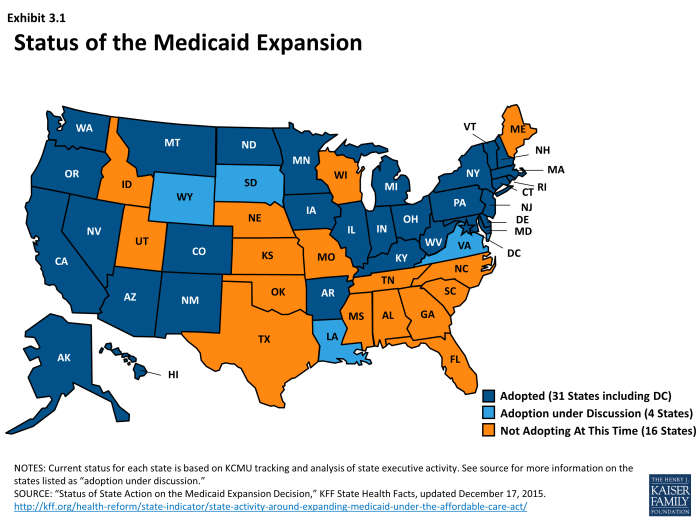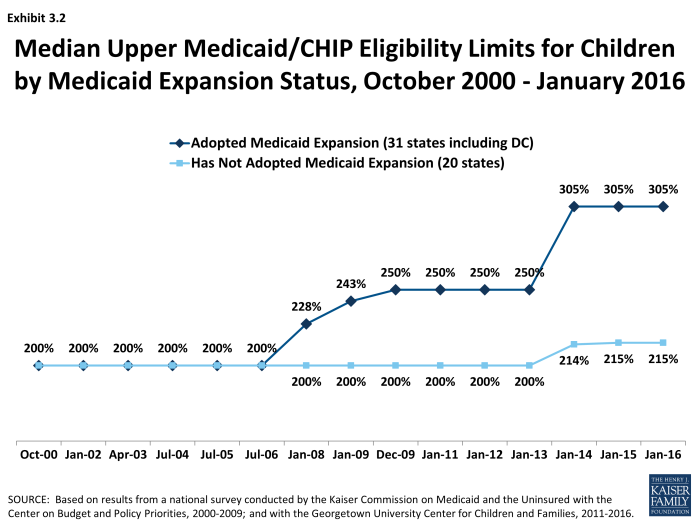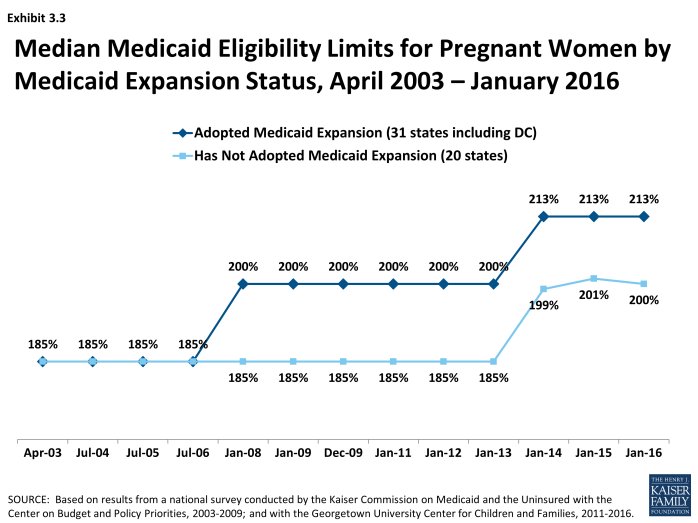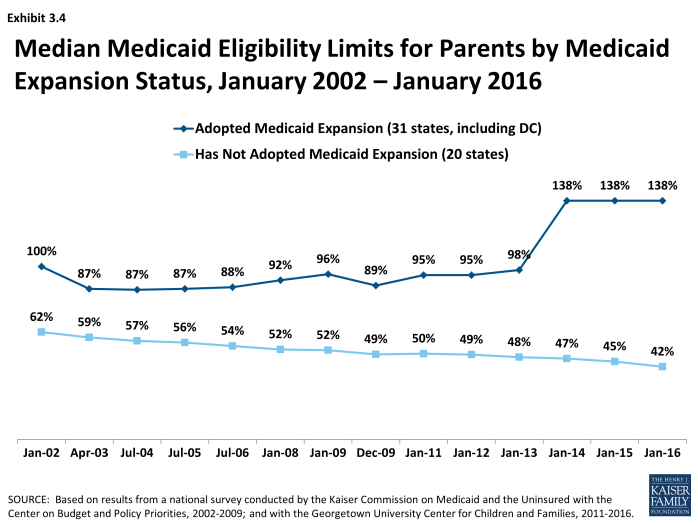Trends in Medicaid and CHIP Eligibility Over Time
Section 3: Eligibility Trends by Medicaid Expansion Status
This section analyzes trends in eligibility by the status of implementation of the Medicaid expansion as of January 2016, which is the most recent date of the eligibility data in this analysis (Exhibit 3.1).
States that implemented the Medicaid expansion had higher median eligibility limits compared to non-expansion states across eligibility groups. Over time, the difference between median eligibility limits for expansion and non-expansion states widened for all eligibility groups. As expected, the largest differences emerged for parents and other adults after implementation of the expansion in 2014. However, the difference between the median eligibility limit for children in expansion states and non-expansion states also grew over time. The gap is smaller for pregnant women and has recently begun to narrow.
Children. Between 2000 and 2016, median eligibility limits for children increased in Medicaid expansion states (Exhibit 3.2). The median eligibility limit for non-expansion states remained unchanged, except for the increase in 2014 that reflected the conversion to MAGI-based standards.
Pregnant women. Similarly, median eligibility limits for pregnant women increased in expansion states between 2003 and 2016, while there was a smaller increase in non-expansion states (Exhibit 3.3). This change in the non-expansion states reflected the conversion to MAGI-based standards as of 2014 and the reinstatement of coverage for pregnant women up to 205% FPL in Virginia as of 2015.
Parents. For parents, median eligibility limits increased in expansion states but declined in non-expansion states between 2002 and 2016, leading to a widening gap over time (Exhibit 3.4). In the Medicaid expansion states, median eligibility limits for parents increased from 100% to 138% FPL, reflecting the fact that many of these states took up options to expand coverage for parents above minimum thresholds prior to the Medicaid expansion. In non-expansion states, the median parent eligibility limit remained low and decreased post-ACA, reflecting eligibility reductions in some states as well as continued erosion of the eligibility limit in some states that base eligibility on a dollar threshold that does not update over time.
Other adults. For other adults, the median eligibility limit rose from 0% to 138% FPL in expansion states between 2011 and 2016, while the median limit remains at 0% FPL in non-expansion states (Exhibit 3.5). Adults without dependent children are ineligible for Medicaid in all of the non-expansions states except Wisconsin, which covers adult up to 100% FPL.





